Quick Links
The “green rush” is showing no signs of stopping. CBD-infused foods and cosmetics occupy more and more supermarket shelves — but hemp and cannabis brands still face advertising challenges.
That’s why SEO is often the only option for CBD companies. If you want to expand your reach beyond a local brick-and-mortar store while complying with ever-changing regulations, this post is for you.
We’ve put together the best CBD SEO practices that can help businesses rank higher on Google Search. You’ll learn how to reach your target audience and stake out a good spot for your brand early in the game.
Why Do CBD Companies Absolutely Need SEO?
The CBD market was valued at $4.9 billion in 2021 and is expected to reach a whopping $47.22 billion by 2028. You still have a chance to become an early adopter — start leveraging SEO to promote your CBD business before the segment gets too crowded and competitive.
SEO will remain relevant to businesses as long as search engines exist. It’s true that their algorithms get smarter day by day, and it’s getting harder to achieve quick wins, but the SEO basics haven’t changed too much.
If you invest time and effort into your CBD SEO and SEM, you can expect to see positive long-term results in a few months. Since the CBD industry is here to stay, it is a reasonable timeframe, especially considering the SEO benefits for cannabis brands.
So, what exactly can you achieve by optimizing your website for search engines?
- Generate more quality leads. If you target the right keywords, your website will attract users with strong purchase intent but also educate and convince those still on the fence about CBD products.
- Build brand authority and credibility. Users trust high-ranking resources — over 25% click the first organic search result, and less than 2.5% scroll beyond position #10.
- Target multiple audiences. CBD products have a wide target audience, including various age groups, so you can gain more attention by targeting different segments with a wide range of keywords and content.
- Reduce your brand’s dependency on social media algorithms. Make sure that your marketing efforts won’t go down the drain just because someone reported you on Instagram or TikTok suddenly banned your viral video.
- Avoid the risk of being banned for paid advertising. In the case of CBD products, the unwritten rules of SEO are more straightforward, reliable, and predictable than the Google Ads policy or Facebook’s guidelines.
- Save time and money by getting more organic traffic. SEO means playing a long game and ensuring that your website will bring you more and more leads in the future without your active participation.
- Improve your general brand visibility. Increase brand awareness by getting more unique visitors and placing your brand name among the most trustworthy and sought-after CBD brands.
- Invest in a long-term marketing strategy. Working on your SEO will help you polish your offer, make valuable connections through link-building, improve the usability of your website, and fill it with content that your potential customers truly need.
10 SEO Best Practices for CBD brands
If you’re new to SEO, it’s quite easy to get overwhelmed by the sheer amount of information out there. Thankfully, you won’t need to dive deep into technicalities if you are using any of the top code-free content management systems — they’ll do most of the work for you.
For example, they can automatically generate your XML sitemap or instantly compress, resize, and convert your images to make your pages load faster. That being said, some SEO activities can’t and shouldn’t be automated, and that’s what we’re going to discuss in this section.
Follow these tried-and-true tips and best practices for cannabis SEO to get ahead of the competition without having to spend a fortune on risky ad campaigns or play it too safe on social media.
#1. Run an SEO audit
Before you start doing any optimization, you need to find out what exactly needs to be improved. An SEO audit is the best way to do that.
It helps you identify issues affecting your organic search performance. In other words, it’s like a full health check-up for your resource, and it also needs to be done regularly.
An SEO audit can show you if your website has:
- JS and CSS errors
- slow load time
- poor website architecture
- unnecessary code
- duplicate content and titles
- missing alt tags
- duplicate or missing meta descriptions
- broken or irrelevant external and internal links
- any of the common UX mistakes
- identical or missing header tags
- content gaps
A thorough audit can take days or even weeks to conduct. You can perform some parts of your SEO audit yourself using intuitive online tools like this free website SEO audit tool. However, to fully understand the bigger picture, you might need to hire an SEO professional or an agency.
#2. Analyze your competitors and their keyword strategy
The CBD market gets more crowded day by day, so you need to monitor your direct and indirect competitors and the keywords they’re targeting.
This helps you not miss out on opportunities and better understand how to start winning in the SERPs (Search Engine Result Pages).
In addition, keyword research helps you discover trending searches and generate new keyword ideas.
You can do this manually on Google or use the Google Ads Keyword Planner, but most marketers rely on keyword research tools. You can, for example, use our free keyword planner for Google, which shows search volumes, competition, difficulty, and relevant keywords.
#3. Improve your website loading speed
According to a Google and Deloitte study, a mere 0.1s increase in loading time can boost sales conversions by 8.4%, average order value by 9.2%, and bounce rate by 8.3%. Plus, it’s an official Google ranking factor in and of itself, so speeding up your site is a must.
There’s no need for guesswork — just try Google PageSpeed Insights, Test My Site, GTmetrix, or Pingdom Website Speed Test to measure the loading speed of your website and pinpoint any potential issues.
The aforementioned website speed test tools can also generate recommendations for your website and help you address specific problems to improve your site’s loading speed.
#4. Make your website mobile-friendly and conversion-oriented
Mobile-friendliness is a crucial factor for cannabis SEO, which hardly comes as a surprise. If you sell lifestyle and wellness products, you want your customers to be able to purchase from you with ease, without having to change devices. Otherwise, their bumpy user experience will totally undermine your selling proposition.
That’s another reason to conduct an SEO audit. A comprehensive audit will tell you how mobile-friendly your website is, which is a huge ranking factor since mobile devices account for more than half of organic search engine visits. Also, companies that commit to great mobile design see increases in revenue of 32% on average.
#5. Analyze user intent and target more specific keywords
The CBD market is predicted to grow at a compound annual growth rate of 21.2%. It makes sense to target a specific niche instead of trying to fight all the biggest players at once.
To achieve that, you need to target low-competition, long-tail keywords that are more relevant to what your target customer is searching for. Targeting more general, highly competitive keywords would be more expensive. Also, many of them are purely informational.
Use the keyword tools we’ve mentioned above to discover easy-to-target keywords your competitors are sleeping on.
Most even calculate the so-called keyword difficulty for you — a complex metric showing how easy or hard it is to rank for any particular keyword.
#6. Don’t forget about meta tags, H1s, and alt tags
It’s easy to get carried away and forget about the essentials — even if your CMS auto-generates meta descriptions for you, it’s still better to double-check them and manually optimize them for your key website pages.
The same goes for headings — make sure that all your important pages include semantic keywords and relevant questions in subheaders and use the correct header tags. Your headings should accurately summarize the contents of your page, not only highlight relevant keywords. By using different header tags, you can create a clear and intuitive hierarchy for each of your pages.
Although image alt tags aren’t as crucial for SEO, they can positively impact your ranking because they make your content more accessible for visually impaired users and visitors with slow Internet connections.
#7. Focus on local SEO
If you own a physical store, you can target potential customers living or working in close proximity to your business. To put it another way, when someone performs a local search for CBD products, your store’s name will pop up in the results.
Local SEO is another way to create organic visibility for your brand. Unsurprisingly, Google does not reveal the exact ranking factors, but the company does shed some light on what business owners should do to appear in local results on Google Maps and Search:
- Enter complete business data (address, phone number, category, etc.) and keep your information up to date.
- Verify your business location.
- Update your business hours info regularly.
- Actively respond to customer reviews.
- Add photos demonstrating your products or services.
#8. Work on your internal linking
Internal links point from one page to another and help users and search engines discover related pages on your website. They create logical connections between your website pages.
This optimization tactic is often completely neglected or underutilized, even though it’s practically free. You can use it strategically to boost your cannabis SEO by:
- Passing authority from “more influential” to “less powerful” website pages.
- Enhancing your UX by helping your visitors discover more of your content.
- Using internal links to provide more context.
You can evaluate your existing internal linking by using one of the SEO tools we recommended earlier.
#9. Create authoritative CBD content and earn strong backlinks
Backlinks are considered to be the lifeblood of SEO — they give your pages “weight” and make them more trustworthy resources in the eyes of search engines like Google.
Create authoritative, in-depth CBD-related content and use it for guest posting and earning quality backlinks. Participating in the online CBD community allows you to improve your SEO while also sharing your knowledge and expertise.
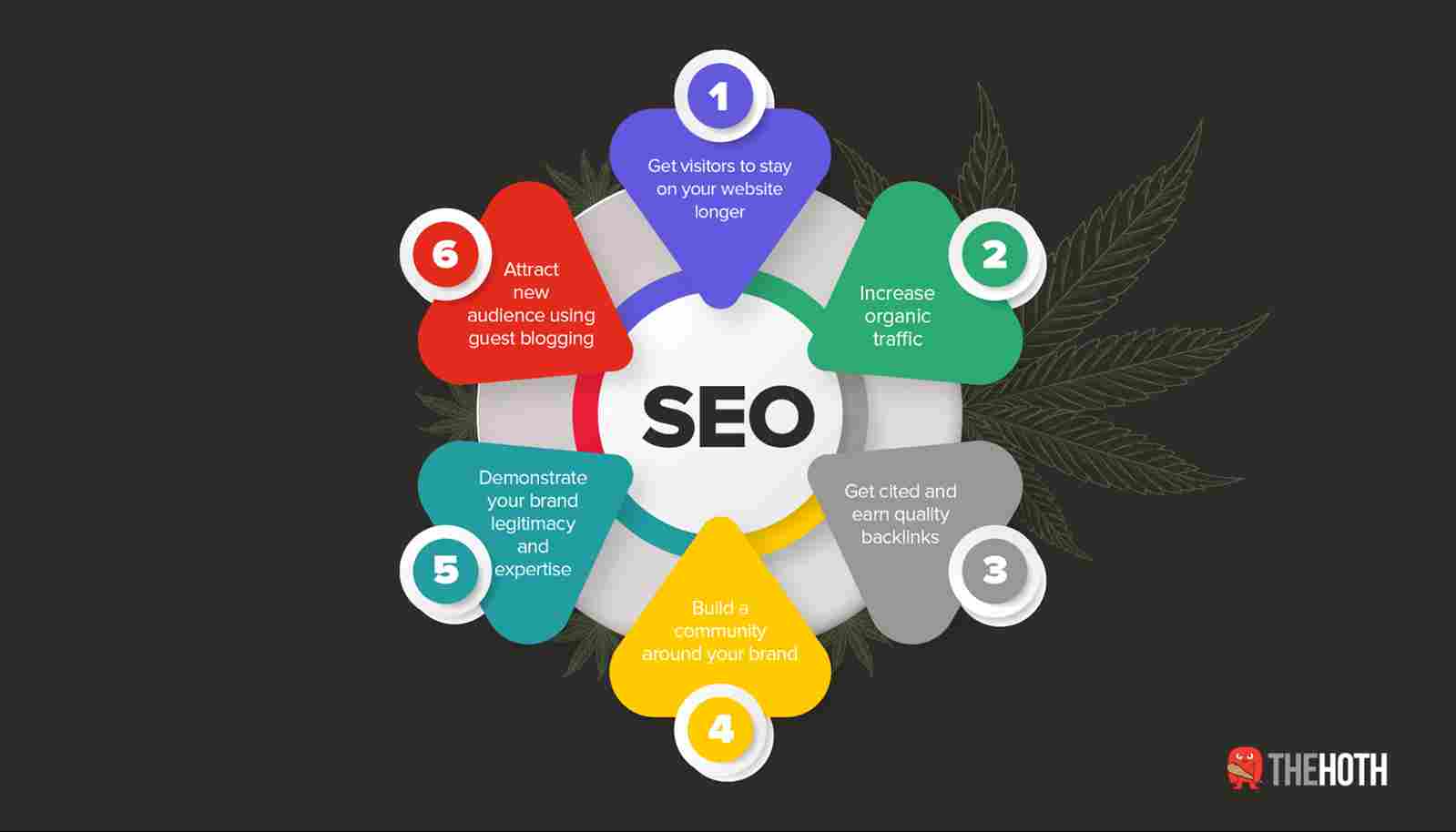
You can work with opinion leaders and lifestyle bloggers to get extremely valuable backlinks from related websites. Since CBD oil is all the rage, many creators and magazines will be happy to review a new product or interview you as a CBD entrepreneur.
Here are more reasons why you should double down on content marketing to boost your CBD SEO:
- Educate your audience on the science-backed benefits of CBD to increase dwell time and win their trust.
- Use informative SEO-friendly blog posts to drive organic traffic.
- Prove your brand legitimacy and leadership.
- Attract a new audience through guest posts.
Make sure to run an SEO link audit regularly — it will allow you to check your website link profile and spot broken or low-quality links.
#10. Use social media to drive website traffic and help your SEO
Even if you can’t run promotional campaigns on social media, you can still attract attention to your CBD brand and make it more visible. Here’s how Instagram and other social platforms can help you with that:
- Distribute your content more efficiently and attract high-quality leads.
- Use social shares to signal to Google that many users are interested in your offer.
- Create searchable high-value content pieces such as podcasts and share them on social media.
- Publish expert videos to encourage backlinking.
- Build your brand community and make your audience more engaged.
- Strengthen your brand reputation to indirectly demonstrate the validity of your website to Google.
- Increase brand recognition and get more organic traffic.
- Boost your local SEO by getting tagged and mentioned in relation to a specific location.
Create your CBD SEO strategy in a hands-off manner
While you can invest the time in managing these SEO best practices yourself, imagine the luxury of having your own personal SEO expert working one-on-one with you. That’s what HOTH X is — we offer comprehensive and personalized SEO services.
We design a customized CBD SEO strategy for you, execute it, and send you transparent reports showing everything we’ve achieved. On top of that, we offer flexible pricing and packages.
Book a call to get your free 30-minute strategy session!







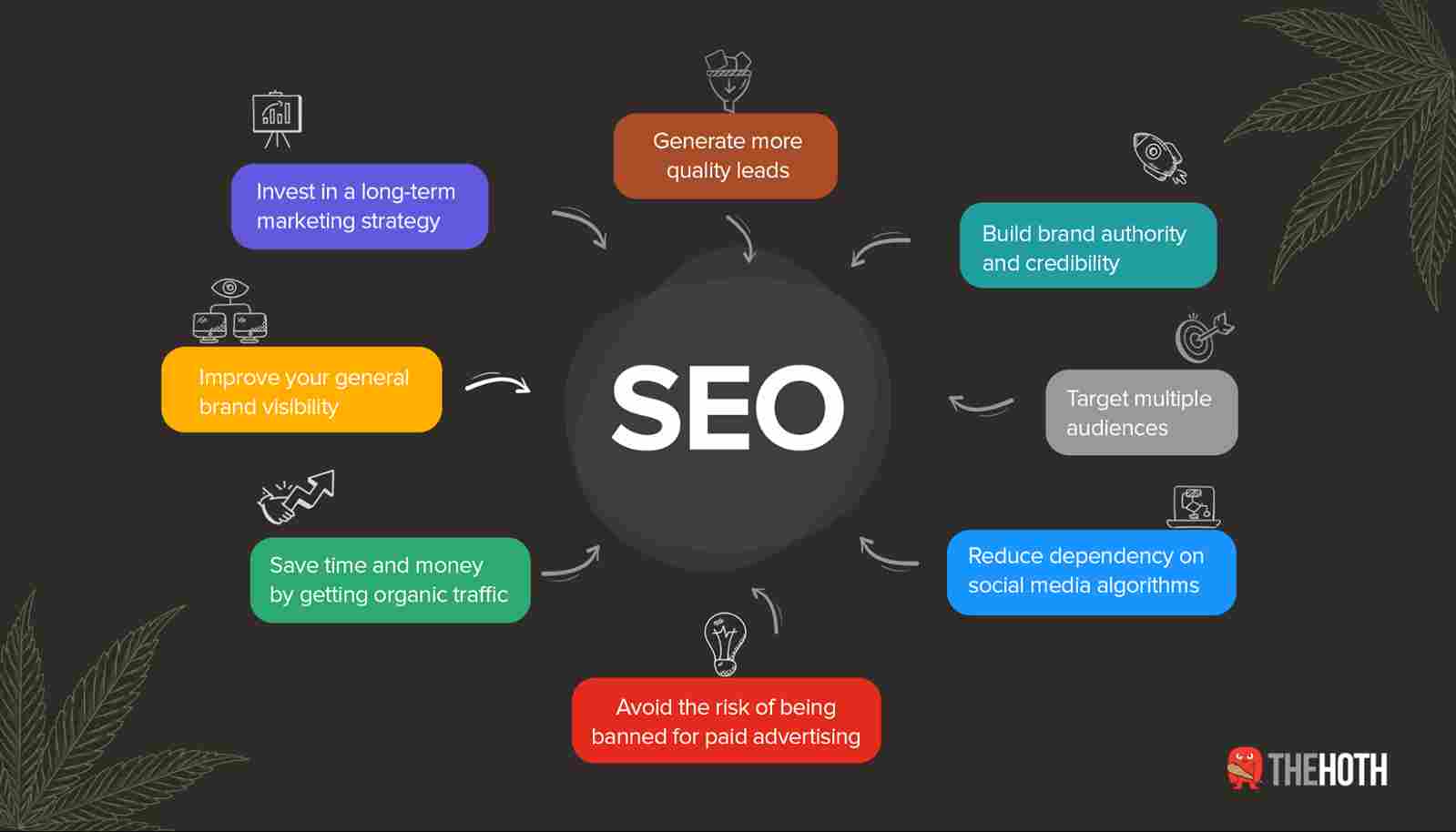
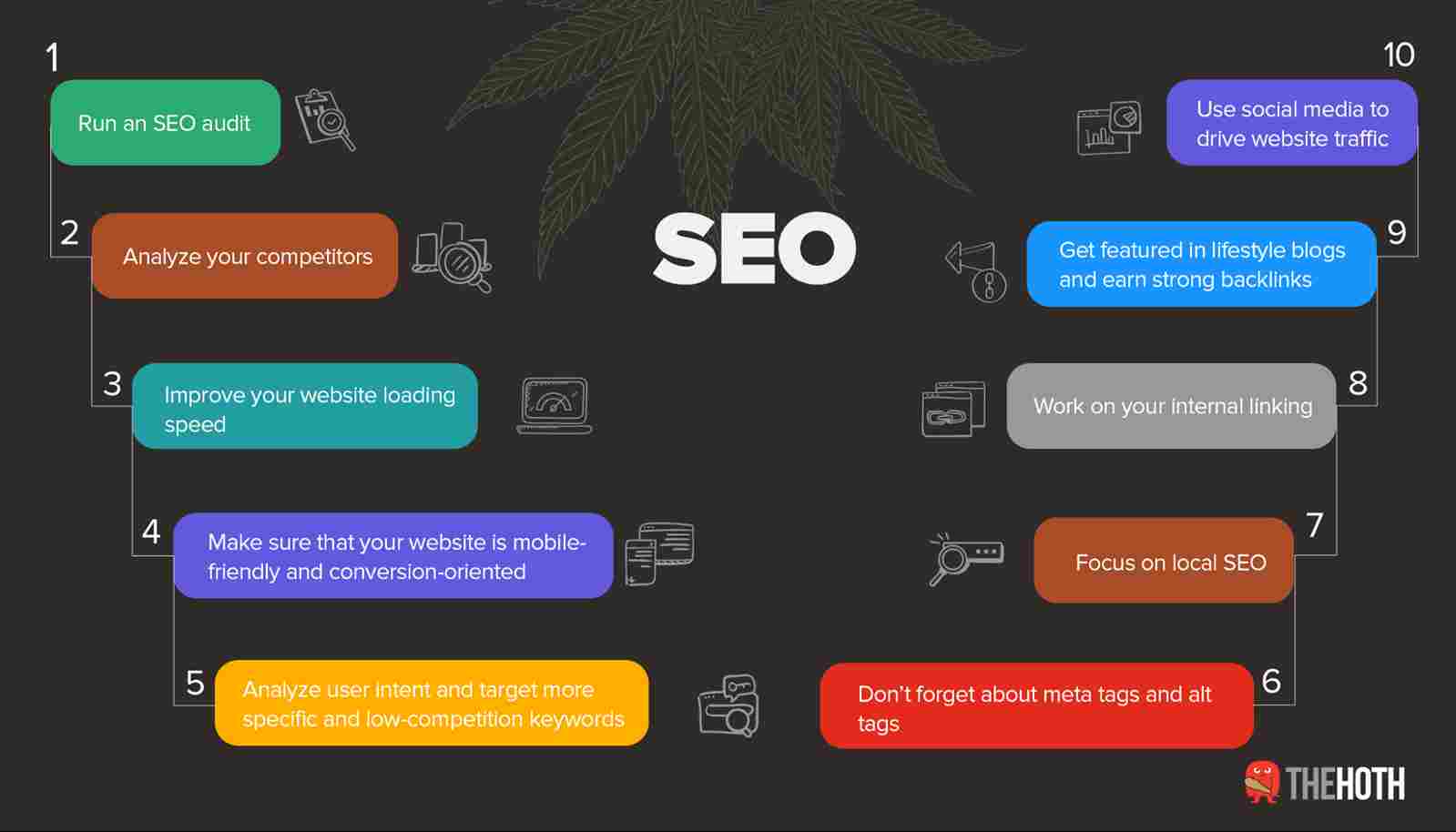
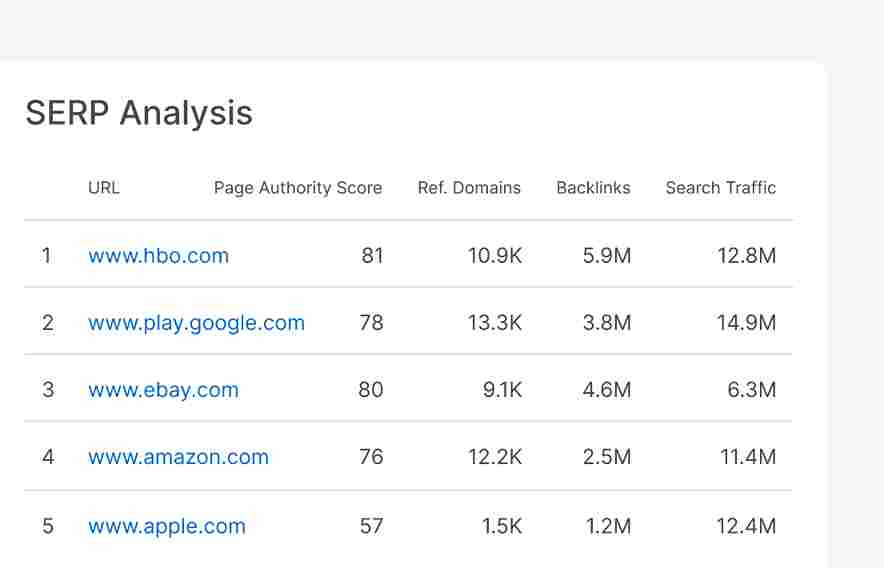
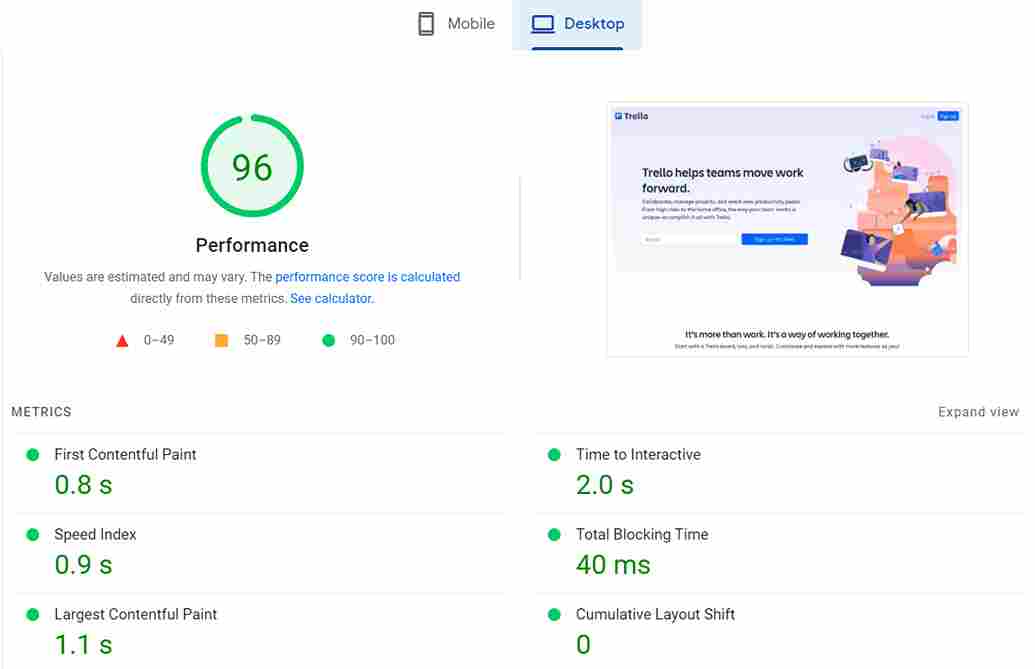
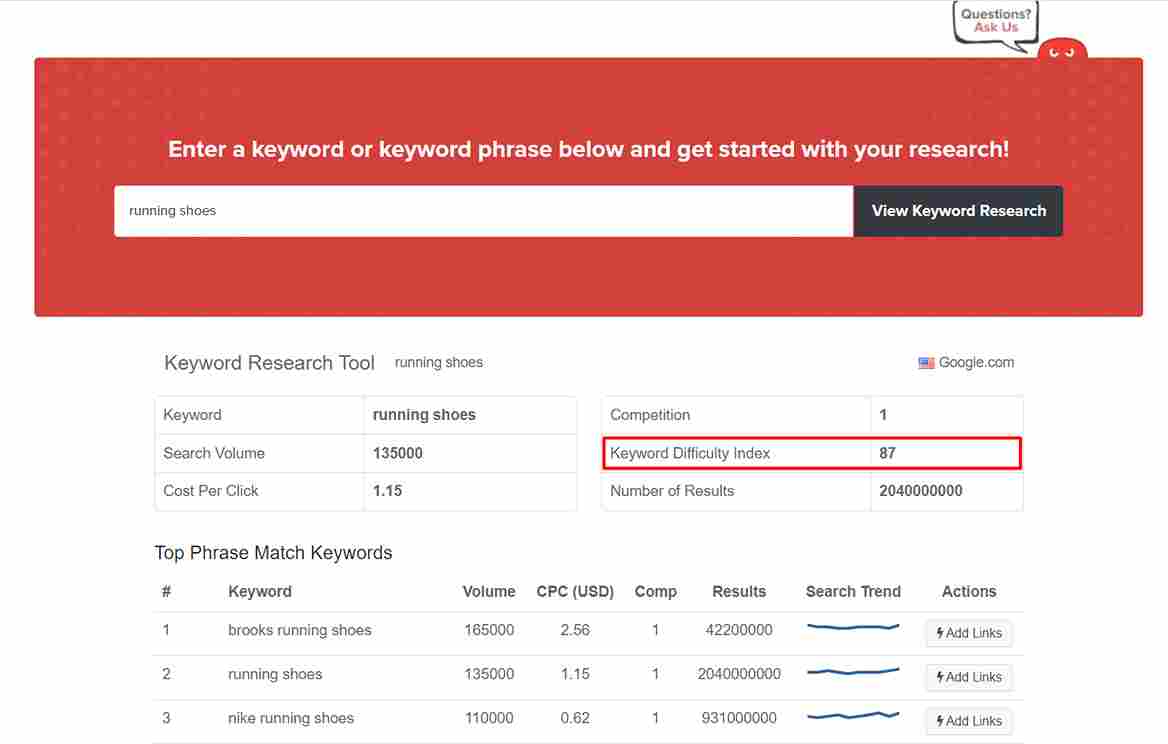
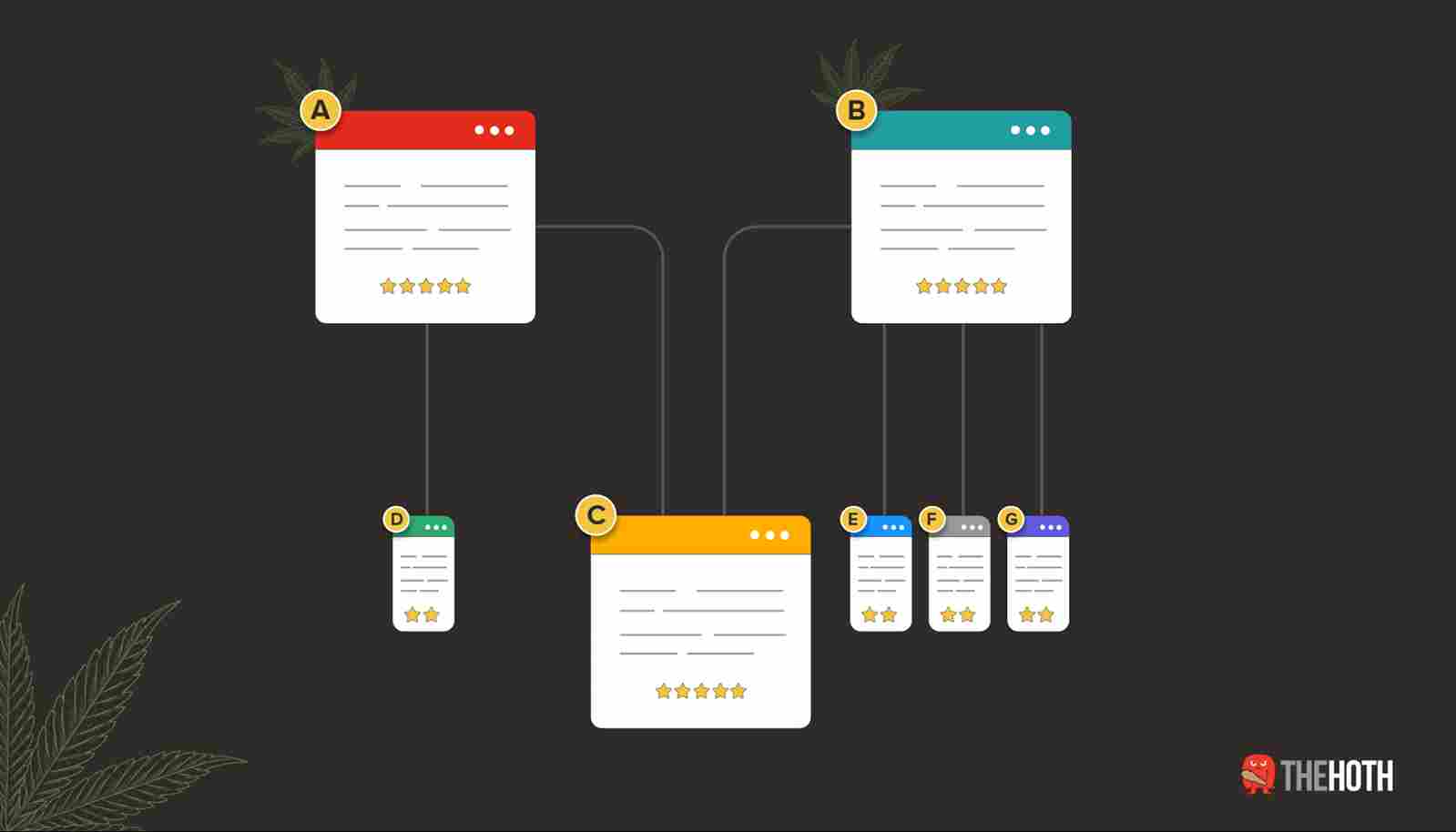


It’s valuable informative.